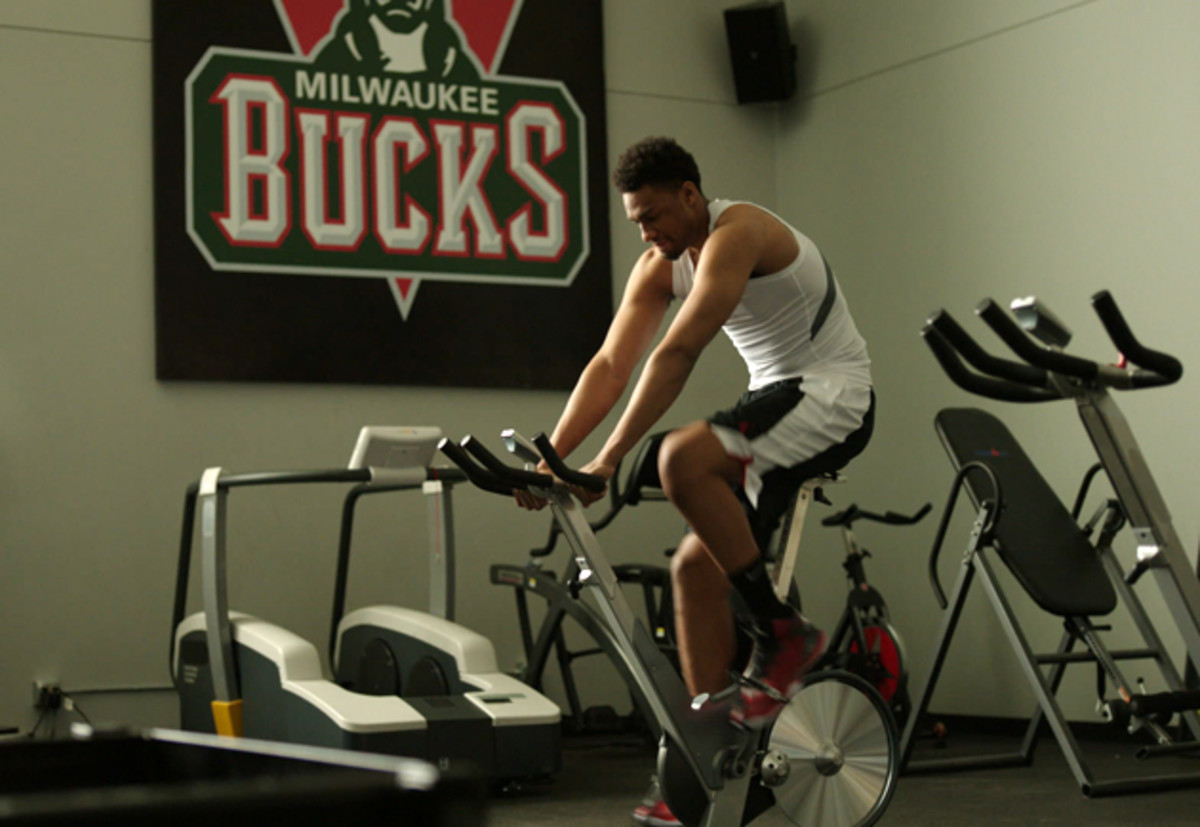Training with Jabari Parker: How the Bucks forward is working to get back

On the evening of March 16, 2013, Chicago’s Simeon Career Academy celebrated its fourth consecutive state championship title, led by senior small forward Jabari Parker’s 20 points and eight rebounds.
On the evening of March 16, 2014, Duke University suffered a contrasting result, a loss to Virginia in the Atlantic Coast Conference championship game, but Parker’s performance was much the same—the rookie led his team with 23 points and eight rebounds.
This year, Parker is bearing the name of yet another new team on his chest, after a quick progression from high school to college to the NBA. But on March 16, instead of being on the court with his teammates like in years past, you’ll find Parker working his way back from a season-ending ACL tear he suffered on Dec. 15.
After a brief, 35-game college career and only 25 professional games on his resume, Parker and the Milwaukee Bucks training staff saw the injury not as a setback but as a chance to take the time to reconstruct the 19-year-old's 6'8", 240-pound body with durability and longevity in mind.
"Jabari was able to realize he had an opportunity to change a lot of things that will make him better in the future," says Bucks' head athletic trainer Scott Barthlama. "Now we are concentrating on correcting bad movement patterns and rebuilding him from the ground up."
[daily_cut.NBA]
While his physical rehabilitation began the day after his surgery on Jan. 5, Parker met with the team's registered dietitian Susan Kundrat less than a week after his injury in December to immediately implement a modified nutrition plan.
“We made a few changes to make sure his diet was a little higher in protein and nutrients for recovery and healing, and bumped up the produce with more salads, veggies and low calorie fruits,” says Kundrat.
Parker’s typical diet includes lean chicken and fish, pasta, salad, fresh fruit, extra water and energy chews for pre-game or pre-workout fuel. For a recovery meal following a game or training session, Parker drinks a high-protein shake and has a meal such as grilled salmon, cous cous, salad and fruit within an hour.
Parker, who now endorses Gatorade products in addition to Jordan Brand, says he learned how to fuel his body at a young age from some of the league’s best minds, including Tim Grover, who stressed the importance of recovery at his clinics. Now, after his injury, Parker’s diet is scaled to his activity level and higher in protein and key nutrients.
“Timing and quality of fuel become a little more critical,” says Kundrat. “The higher protein content also helps with the satiety factor, especially when we had to drop his calories down a little bit more.”

The small forward’s physical rehabilitation includes exercises that strengthen his knees and hip, gluteus and core muscles. The primary focus, though, is on increasing his overall stability.
“You can't fire a canon out of a canoe," says Barthlama, referring to the need for Parker to be balanced before he generates any power. "By being able to contract his core first, he can be much more efficient in his movement patterns."
Behind the Body: Suns center Miles Plumlee talks training, eating right
says, Parker will become more balanced and less likely to be pushed around on the court.
Medicine balls and kettlebells allow Parker to emphasize his core while he builds strength through simultaneous movements, and resistance bands help him work on static and dynamic balance and train his hips to work in conjunction with his leg muscles.
Parker is aware that his natural talents have carried him this far in his young career. But he’s expected to be back on the court early next season and is hoping his efforts elevate his game even higher.
"When I was in high school and college, I got a glimpse of how I needed to train," Parker says. "Now it's all come full circle—my performance needs to be high and time is the enemy, so I need to be as efficient and effective as possible.
